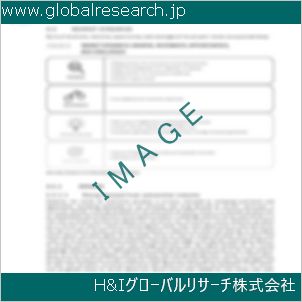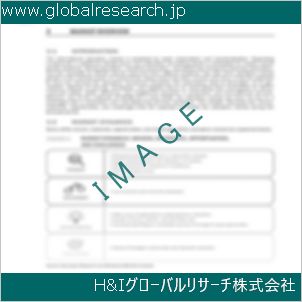Table of Contents
1 Industry Overview of Thionyl chloride
1.1 Definition and Specifications of Thionyl chloride
1.1.1 Definition of Thionyl chloride
1.1.2 Specifications of Thionyl chloride
1.2 Classification of Thionyl chloride
1.3 Applications of Thionyl chloride
1.3.1 Nuclear Application
1.3.2 Non-Nuclear Application
1.4 Industry Chain Structure of Thionyl chloride
1.5 Industry Overview and Major Regions Status of Thionyl chloride
1.5.1 Industry Overview of Thionyl chloride
1.5.2 Global Major Regions Status of Thionyl chloride
1.6 Industry Policy Analysis of Thionyl chloride
1.7 Industry News Analysis of Thionyl chloride
2 Manufacturing Cost Structure Analysis of Thionyl chloride
2.1 Raw Material Suppliers and Price Analysis of Thionyl chloride
2.2 Equipment Suppliers and Price Analysis of Thionyl chloride
2.3 Labor Cost Analysis of Thionyl chloride
2.4 Other Costs Analysis of Thionyl chloride
2.5 Manufacturing Cost Structure Analysis of Thionyl chloride
2.6 Manufacturing Process Analysis of Thionyl chloride
3 Technical Data and Manufacturing Plants Analysis of Thionyl chloride
3.1 Capacity and Commercial Production Date of Global Thionyl chloride Major Manufacturers in 2023
3.2 Manufacturing Plants Distribution of Global Thionyl chloride Major Manufacturers in 2023
3.3 R&D Status and Technology Source of Global Thionyl chloride Major Manufacturers in 2023
3.4 Raw Materials Sources Analysis of Global Thionyl chloride Major Manufacturers in 2023
4 Capacity, Production and Revenue Analysis of Thionyl chloride by Regions, Types and Manufacturers
4.1 Global Capacity, Production and Revenue of Thionyl chloride by Regions 2019-2024
4.2 Global and Major Regions Capacity, Production, Revenue and Growth Rate of Thionyl chloride 2019-2024
4.3 Global Capacity, Production and Revenue of Thionyl chloride by Types 2019-2024
4.4 Global Capacity, Production and Revenue of Thionyl chloride by Manufacturers 2019-2024
5 Price, Cost, Gross and Gross Margin Analysis of Thionyl chloride by Regions, Types and Manufacturers
5.1 Price, Cost, Gross and Gross Margin Analysis of Thionyl chloride by Regions 2019-2024
5.2 Price, Cost, Gross and Gross Margin Analysis of Thionyl chloride by Types 2019-2024
5.3 Price, Cost, Gross and Gross Margin Analysis of Thionyl chloride by Manufacturers 2019-2024
6 Consumption Volume, Consumption Value and Sale Price Analysis of Thionyl chloride by Regions, Types and Applications
6.1 Global Consumption Volume and Consumption Value of Thionyl chloride by Regions 2019-2024
6.2 Global and Major Regions Consumption Volume, Consumption Value and Growth Rate of Thionyl chloride 2019-2024
6.3 Global Consumption Volume and Consumption Value of Thionyl chloride by Types 2019-2024
6.4 Global Consumption Volume and Consumption Value of Thionyl chloride by Applications 2019-2024
6.5 Sale Price of Thionyl chloride by Regions 2019-2024
6.6 Sale Price of Thionyl chloride by Types 2019-2024
6.7 Sale Price of Thionyl chloride by Applications 2019-2024
6.8 Market Share Analysis of Thionyl chloride by Different Sale Price Levels
7 Supply, Import, Export and Consumption Analysis of Thionyl chloride
7.1 Supply, Consumption and Gap of Thionyl chloride 2019-2024
7.2 Global Capacity, Production, Price, Cost, Revenue, Supply, Import, Export and Consumption of Thionyl chloride 2019-2024
7.3 USA Capacity, Production, Price, Cost, Revenue, Supply, Import, Export and Consumption of Thionyl chloride 2019-2024
7.4 EU Capacity, Production, Price, Cost, Revenue, Supply, Import, Export and Consumption of Thionyl chloride 2019-2024
7.5 China Capacity, Production, Price, Cost, Revenue, Supply, Import, Export and Consumption of Thionyl chloride 2019-2024
7.6 Japan Capacity, Production, Price, Cost, Revenue, Supply, Import, Export and Consumption of Thionyl chloride 2019-2024
8 Major Manufacturers Analysis of Thionyl chloride
8.1 Manufacturer One
8.1.1 Company Profile
8.1.2 Product Picture and Specifications
8.1.2.1 Type I
8.1.2.2 Type II
8.1.2.3 Type III
8.1.3 Capacity, Production, Price, Cost, Gross and Revenue
8.1.4 Contact Information
8.2 Manufacturer Two
8.2.1 Company Profile
8.2.2 Product Picture and Specifications
8.2.2.1 Type I
8.2.2.2 Type II
8.2.2.3 Type III
8.2.3 Capacity, Production, Price, Cost, Gross and Revenue
8.2.4 Contact Information
8.3 Manufacturer Three
8.3.1 Company Profile
8.3.2 Product Picture and Specifications
8.3.2.1 Type I
8.3.2.2 Type II
8.3.2.3 Type III
8.3.3 Capacity, Production, Price, Cost, Gross and Revenue
8.3.4 Contact Information
8.4 Manufacturer Four
8.4.1 Company Profile
8.4.2 Product Picture and Specifications
8.4.2.1 Type I
8.4.2.2 Type II
8.4.2.3 Type III
8.4.3 Capacity, Production, Price, Cost, Gross and Revenue
8.4.4 Contact Information
8.5 Manufacturer Five
8.5.1 Company Profile
8.5.2 Product Picture and Specifications
8.5.2.1 Type I
8.5.2.2 Type II
8.5.2.3 Type III
8.5.3 Capacity, Production, Price, Cost, Gross and Revenue
8.5.4 Contact Information
…
9 Marketing Trader or Distributor Analysis of Thionyl chloride
9.1 Marketing Channels Status of Thionyl chloride
9.2 Traders or Distributors with Contact Information of Thionyl chloride by Regions
9.3 Ex-work Price, Channel Price and End Buyer Price Analysis of Thionyl chloride
9.4 Regional Import, Export and Trade Analysis of Thionyl chloride
10 Industry Chain Analysis of Thionyl chloride
10.1 Upstream Major Raw Materials Suppliers Analysis of Thionyl chloride
10.1.1 Major Raw Materials Suppliers with Contact Information Analysis of Thionyl chloride
10.1.2 Major Raw Materials Suppliers with Supply Volume Analysis of Thionyl chloride by Regions
10.2 Upstream Major Equipment Suppliers Analysis of Thionyl chloride
10.2.1 Major Equipment Suppliers with Contact Information Analysis of Thionyl chloride
10.2.2 Major Equipment Suppliers with Product Pictures Analysis of Thionyl chloride by Regions
10.3 Downstream Major Consumers Analysis of Thionyl chloride
10.3.1 Major Consumers with Contact Information Analysis of Thionyl chloride
10.3.2 Major Consumers with Consumption Volume Analysis of Thionyl chloride by Regions
10.4 Supply Chain Relationship Analysis of Thionyl chloride
11 Development Trend of Analysis of Thionyl chloride
11.1 Capacity, Production and Revenue Forecast of Thionyl chloride by Regions and Types
11.1.1 Global Capacity, Production and Revenue of Thionyl chloride by Regions 2024-2029
11.1.2 Global and Major Regions Capacity, Production, Revenue and Growth Rate of Thionyl chloride 2024-2029
11.1.3 Global Capacity, Production and Revenue of Thionyl chloride by Types 2024-2029
11.2 Consumption Volume and Consumption Value Forecast of Thionyl chloride by Regions, Types and Applications
11.2.1 Global Consumption Volume and Consumption Value of Thionyl chloride by Regions 2024-2029
11.2.2 Global and Major Regions Consumption Volume, Consumption Value and Growth Rate of Thionyl chloride 2024-2029
11.2.3 Global Consumption Volume and Consumption Value of Thionyl chloride by Types 2024-2029
11.2.4 Global Consumption Volume and Consumption Value of Thionyl chloride by Applications 2024-2029
11.3 Supply, Import, Export and Consumption Forecast of Thionyl chloride
11.3.1 Supply, Consumption and Gap of Thionyl chloride 2024-2029
11.3.2 Global Capacity, Production, Price, Cost, Revenue, Supply, Import, Export and Consumption of Thionyl chloride 2024-2029
11.3.3 USA Capacity, Production, Price, Cost, Revenue, Supply, Import, Export and Consumption of Thionyl chloride 2024-2029
11.3.4 EU Capacity, Production, Price, Cost, Revenue, Supply, Import, Export and Consumption of Thionyl chloride 2024-2029
11.3.5 China Capacity, Production, Price, Cost, Revenue, Supply, Import, Export and Consumption of Thionyl chloride 2024-2029
11.3.6 Japan Capacity, Production, Price, Cost, Revenue, Supply, Import, Export and Consumption of Thionyl chloride 2024-2029
12 New Project Investment Feasibility Analysis of Thionyl chloride
12.1 New Project SWOT Analysis of Thionyl chloride
12.2 New Project Investment Feasibility Analysis of Thionyl chloride
13 Conclusion of the Global Thionyl chloride (CAS 7719-09-7) Industry 2024 Market Research Report
| ※参考情報 塩化チオニル(Thionyl chloride、CAS 7719-09-7)は、化学式SOCl2で表される無機化合物であり、重要な工業用化学物質の一つです。色は淡黄色から無色で、特有の刺激臭を持っています。本化合物は、主に塩素と硫黄の化合物で構成されており、特に有機合成において重要な役割を果たします。 塩化チオニルは、高い反応性を持つ化学物質であり、特に水分に敏感です。水と反応することで、塩酸(HCl)や二酸化硫黄(SO2)を生成します。この反応性は、塩化チオニルを有機化合物の合成や中間体の製造に利用する際の特長となっています。また、塩化チオニルは揮発性があり、気体としても存在できるため、さまざまな用途で利用されています。 塩化チオニルは、主に有機合成反応に使用され、アルコールやカルボン酸の塩素化反応に頻繁に用いられます。この反応は、塩素原子を導入することにより化合物の特性を変更し、全く新しい化合物を得ることが可能です。たとえば、塩化チオニルは、アルコールを塩化物に変換するために使用され、これにより反応物の再利用が可能になります。具体的には、アルコールを塩化チオニルと反応させることで、アルキル塩化物へ変換することができます。 さらに、塩化チオニルは、酸化剤や還元剤としても機能し、さまざまな反応の中間体として働くことがあります。このような特性は、塩化チオニルを合成化学や医薬品開発の分野で非常に重要な化合物にしています。また、塩化チオニルは、医薬品、農薬、合成香料などの製造に広く利用されているため、工業的な重要性も高いといえます。 塩化チオニルの利用に関する最近の技術進歩の一つには、反応条件の最適化や新しい合成経路の開発があります。特に、環境への配慮から、反応条件を最小限に抑え、廃棄物の生成を減少させるための技術が発展しています。これにより、持続可能な化学プロセスへの移行が進んでおり、この分野での塩化チオニルの役割はますます重要となっています。 一方で、塩化チオニルは、毒性を持つ物質であるため、取り扱いには注意が必要です。皮膚や目への刺激性があり、吸入すると呼吸器に影響を及ぼす可能性があります。そのため、塩化チオニルを取り扱う際には、適切な安全対策を講じることが求められます。具体的には、適切な防護具を着用し、通気の良い場所で作業を行うなどの基本的な安全対策が重要です。 また、塩化チオニルは、ガス状であるため、貯蔵や輸送においても特別な注意が必要です。適切な容器で密封され、温度や圧力の管理が徹底されなければなりません。このように、塩化チオニルはその特性のゆえに扱いが難しい部分もありますが、有用性と反応性からも広く利用されています。 塩化チオニルには、いくつかの異性体や同族体がありますが、最も一般的に用いられるのはその基本的な形態です。他にも、特定の条件下で生成される特定の化合物が存在しますが、一般的には塩化チオニルが最も重要で広く使用されているといえます。 総じて、塩化チオニルは、さまざまな化学反応において欠かすことのできない物質であり、その特性から有機合成において大変重宝されています。医薬品や農薬の合成における利用は多岐にわたり、今後も新しい応用先が開発されることが期待されています。その一方で、取り扱いに際しての安全性の確保、環境への配慮、効率的なプロセスの開発も今後の課題となるでしょう。これにより、塩化チオニルは、今後も化学産業において重要な役割を果たし続けることが見込まれます。 |
❖ 免責事項 ❖
http://www.globalresearch.jp/disclaimer












